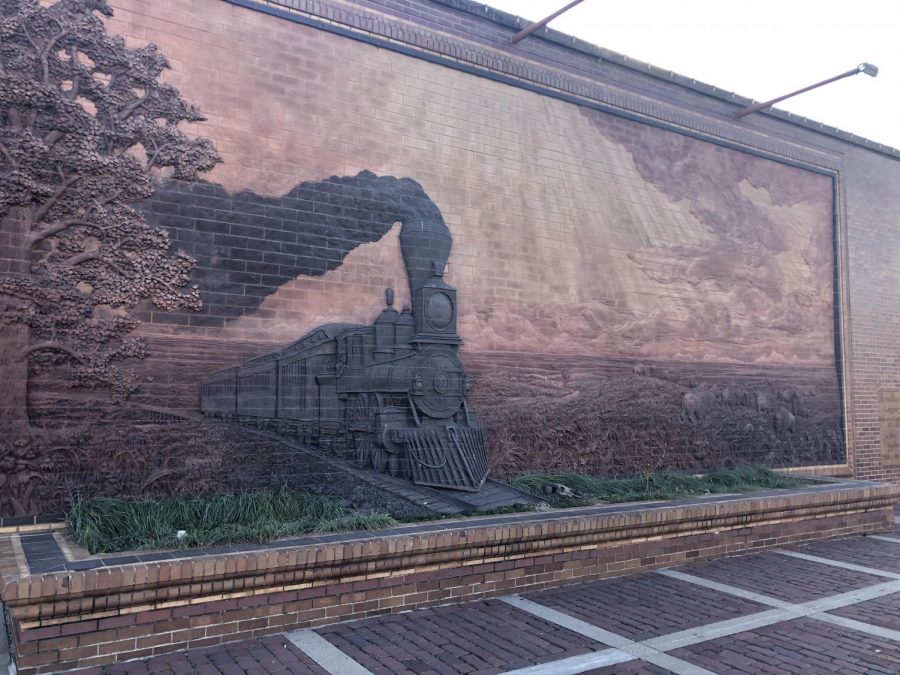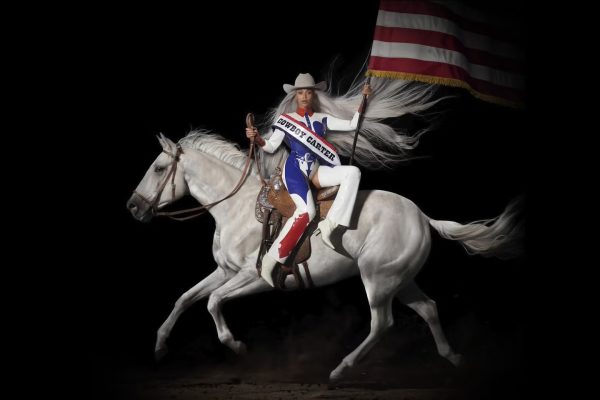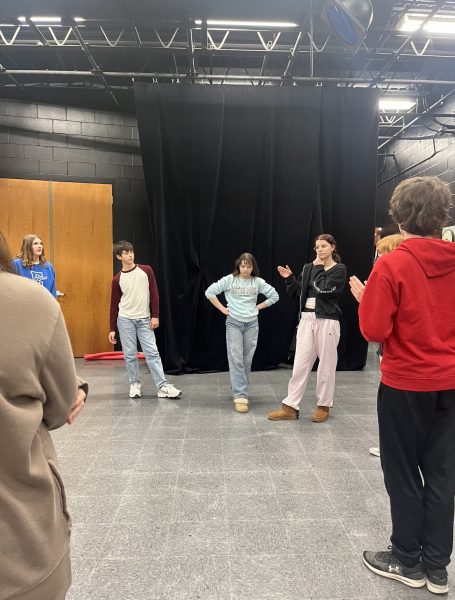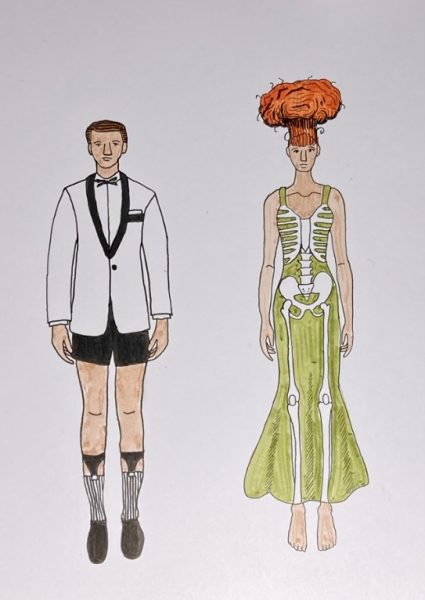Downtown Lincoln showcases some unique historical art
Lincoln currently has 108 public art pieces within the city, and 22 of them are historically-based monuments. Now, you’ve probably seen some of these statues and carvings, such as the Iron Horse stone downtown, or the Native American in Pioneer’s Park. Each piece has its own story to tell, as to when it was built, who it is inspired by, and what were the feats of these humans, animals, and inventions that connect with the state of Nebraska.
“Some of what the city has (public art) fastens to the earlier days of Nebraska,” Director of Lincoln Arts Council Diane Gonzales said. “We have art dating back to the early … 1900s. We have Lincoln, yes, as our capital is named after him, but … there are some we have regarding history that tell of characters not many are really aware of … or of their significance.”
Chief Standing Bear is one of Nebraska’s more common figures, as he was a Native American chief of the Ponca tribe during the early 19th century. He was the first person to speak up to the Supreme Court against the unjust treatment his people were receiving from the United States Army. His tribe was forced out of their homeland, along with tens of other neighboring tribes, to reservation camps, where they were forced into abandoning their culture and tradition to assimilate into the white culture.
Standing Bear’s legacy is pertained in the statue, built in 2017 by Benjamin Victor in downtown Lincoln. Next to his figurine is a direct quote, one he says to a Supreme Court judge in 1879; “That hand is not the same color as yours, but if I pierce it, I shall feel pain. If you pierce your hand, you will also feel pain. The blood that will flow from my hand will be the same color as yours. I am a man, God made us both.”
Another statue, which is found on the University of Nebraska-Lincoln’s campus, is Archie the Columbian Mammoth. Archie was built in 2006 outside the Morrill Hall State Museum and was inspired by an already-made fossil replica of the creature in 1922. The original Archie, as some may consider, was not found with an intact skeleton, but from bone remnants on a farmer’s hill by his chickens. The model is placed inside UNL’s Morrill Hall, the state museum, being titled as the world’s Columbian Mammoth display. Nebraska is a hotspot for prehistoric fossil hunting, especially in the Northwest regions, where fossil beds cover thousands of acres of unoccupied wilderness. Mammoths are among the creatures they find, so it makes sense the state’s official mammal is that.
“You learn new things every day,” UNL student Jillian Wade states, regarding the origin of the statue. “I didn’t know about Archie till my friend told me to visit this museum. Coming out of it, you realize Nebraska isn’t all that boring.”
Lewis and Clark are a pair of names commonly taught to young kids in history class. Meriwether Lewis and William Clark were the ones who led the 1803 expedition West of the Mississippi River, through the wild frontier to gain a better understanding of the United State’s geography and environment. The statue by George W. Lundeen shows the two men, alongside a Native tribesman and his daughter, looking off into the distance. Lewis’ Newfoundland dog Seaman is also with the group, as he was the only dog to make the entire trip with them there-and-back. Nebraska was one of the 11 states they trekked through, moving along the east side up and out past the north, using the Platte river as guidance.
How about the Iron Horse? No, it’s not a horse. Instead, it’s a train, but more specifically, a steam-powered locomotive. This idea was brought in during the 1800s when people commonly used horses to power most machinery. But with the invention of a train operated by steam, thanks to England mechanists Richard Trevithick and George Stephenson, workers managed to move about goods more efficiently. The artist of the brick mural in Downtown Lincoln is Jay Tschetter, who created it in 1990. What the public is to understand when viewing this piece is the development of society during this era, when rural landscapes were adjusted to benefit the coming of urban settlers and workers.
“This is so cool,” Malakai Peters, another pedestrian and downtown resident, says. “It reminds me of the movie Spirit, you know? Like, the setting and everything. I think this is my most favorite art I’ve seen here, because … it pictures the scene so beautifully, and … it’s not even that deep.”
There are many more historical pieces scattered throughout Lincoln. And not just historical, but more modern-like paintings and statues to see, whether by walking through a park or driving through the city. For more on the public pieces, visit https://publicart.artscene.org/

Hey, everyone! My name is Faqeha, and I’m a junior here at East. I moved to Nebraska in February 2020 from a small coastal town in California. I’m...












